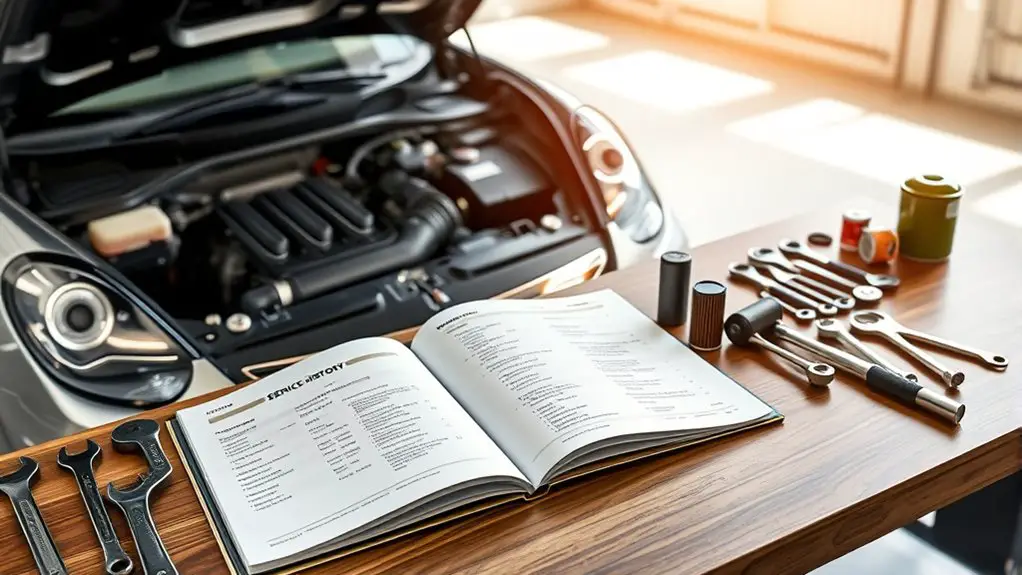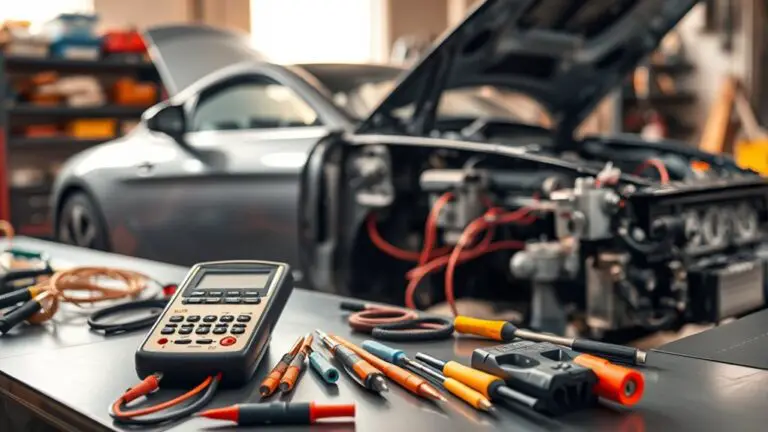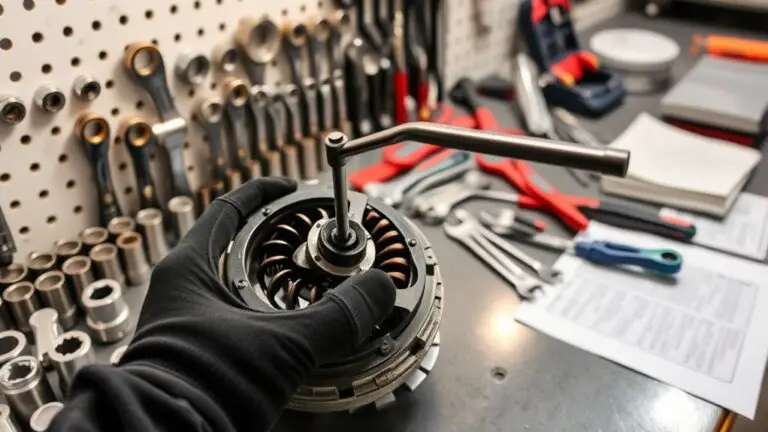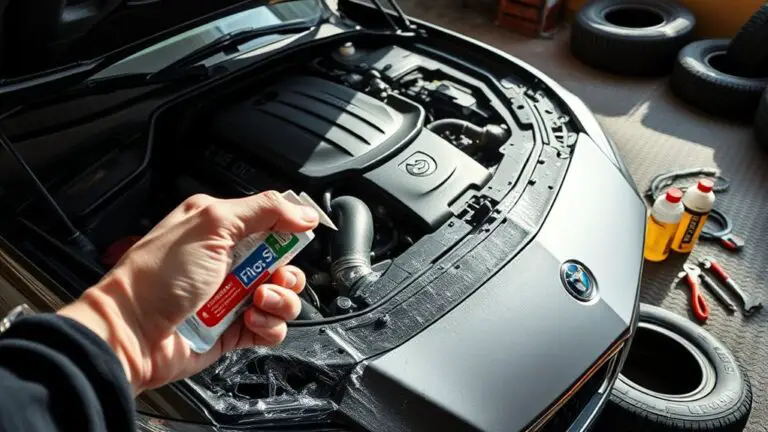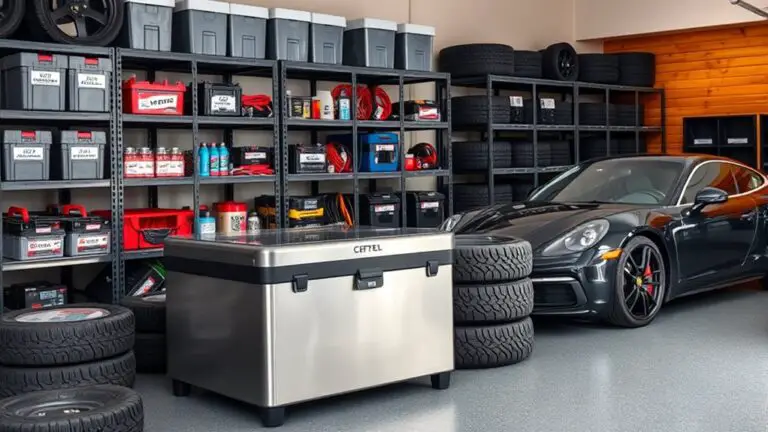How to Prepare Your Car and Tools Before Tackling Missing Service History
To start, catalog what you know about the car—make, model, year, mileage, and any known issues. Identify gaps in service history and mark missing receipts or manuals. Gather essential documentation sources (dealers, independent shops, previous owners) and set up an offline tracking sheet with core fields: date, item, source. Assemble a core toolkit: OBD-II scanner, multimeter, flashlight, tire gauge, notebook, and power bank. Maintain a clean, safe workspace and plan realistic milestones—you’ll uncover practical steps as you proceed. More specifics await.
Assess What You Know About the Vehicle

If you’re prepping your car for service history, start by evaluating what you already know about the vehicle. You’ll build a clear baseline, so you can track changes over time without guesswork. Begin with core facts: make, model, year, current mileage, and any notable defects or recent repairs. Check service receipts, owner manuals, and previous maintenance notes for consistency and gaps. Assess your maintenance knowledge: what services are standard for this model, what components regularly require attention, and which issues you’ve personally addressed. Confirm the vehicle’s status of recalls and warranty coverage, if applicable. Observe how the car behaves during startup, idle, acceleration, braking, and cornering, noting any unusual sounds or vibrations. Document all findings in a concise, organized list. Prioritize actions you can validate, such as fluid levels, tire tread, and brake wear, to establish trust in your own vehicle familiarity while preserving freedom to seek professional guidance when needed.
Identify Gaps in the Service History
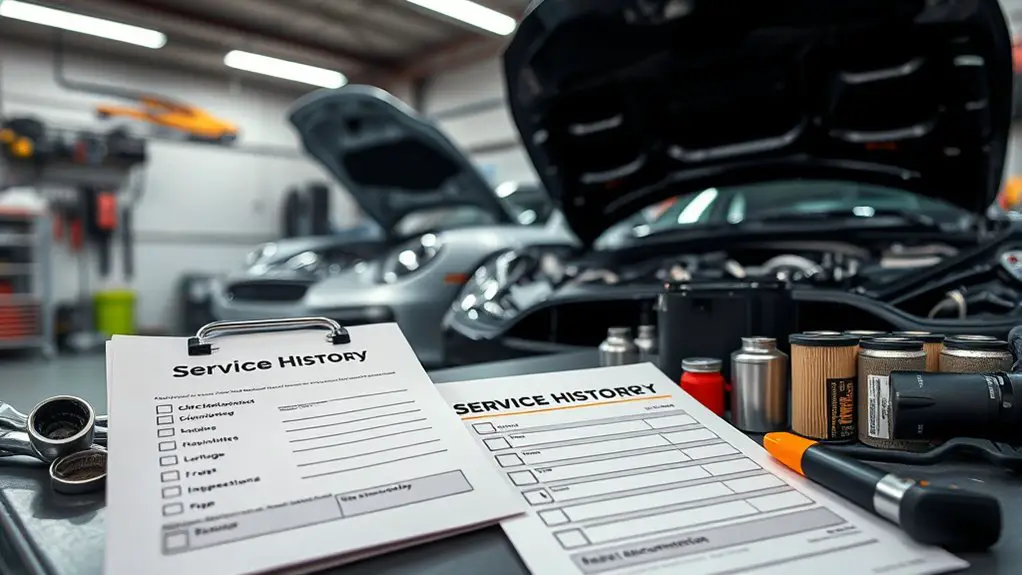
Identify any gaps in records and note when evidence of maintenance is missing. Consider prior service sources you can verify, and mark where documentation is incomplete or unclear. Use a gaps analysis approach to prioritize which records to obtain or confirm first.
Gaps in Records
Gaps in service records can obscure a vehicle’s true maintenance history, so start by mapping out what’s documented and what isn’t. You’ll identify missing periods, inconsistent intervals, and blank maintenance logs, then prioritize targets for verification. Use a disciplined approach: list completed service intervals, note dates, mileage, and tasks; flag absent entries; and quantify risk by defect likelihood and owner history. This clarity guides your next steps and keeps you moving toward a complete picture. Below, a simple table helps visualize the gaps at a glance.
| Completed | Missing/Unverified | Notes |
|---|---|---|
| Service 1 | Service 2 needed | Verify with records |
| Service 3 | — | Check mileage alignment |
| — | Service 4 pending | Schedule confirmation |
Prior Service Sources
Prior service sources are the backbone of a reliable maintenance history, so start by locating every place records might live and verifying what’s truly documented. You’ll hunt for service records from the owner’s manual, dealership portals, independent shops, and mobile-service receipts. Don’t overlook third-party apps, insurance diagnostics, and inspection reports that reference maintenance timing. Compile a single list, noting dates, mileages, and services performed. Cross-check with your vehicle’s maintenance schedule to reveal gaps without assuming. Maintain a clean, timestamped folder of digital copies and originals. When you find incomplete entries, mark them for follow-up, but keep proceeding with your verification. This foundation supports accurate decisions about repairs, recalls, and future maintenance, anchoring your approach in complete service records and maintenance logs.
Documentation Gaps Analysis
Have you checked where your service history might be incomplete, and what those missing entries could imply for reliability and timing? Documentation gaps analysis helps you map what’s missing, why it matters, and how it affects maintenance windows. You’ll verify dates, services, and vendors, then validate records against expected intervals. The goal is a clear, defendable timeline you can rely on.
- Identify incomplete periods and cross-check with owner logs, receipts, and dealership records
- Perform record validation to confirm service types, mileage, and service centers
- Flag high-risk gaps and establish a plan to recover or estimate missing data
This method keeps you in control, practical, and ready to act, preserving freedom through verifiable documentation and focused maintenance. documentation analysis, record validation
Gather Essential Documentation to Source Records

Gathering essential documentation to source records starts with a clear plan. You map what you already have, what you need, and where gaps could shift the project. Start by listing document types you expect to encounter: ownership papers, service invoices, inspection reports, warranty cards, and repair receipts. This inventory keeps you focused and prevents scope creep. Next, identify potential record sources: dealer service shops, independent mechanics, previous owners, manufacturers, and digital portals. For each source, define access methods, timelines, and any permissions required. Prioritize sources that offer extensive coverage—full service histories over partial notes. Create a simple tracking sheet or notebook, labeling entries by date, source, and document type. Keep copies in both digital and physical formats to guard against loss. Be proactive: request records politely, reference VIN or license details, and note any missing items for follow-up. This disciplined approach accelerates, clarifies, and legitimizes your sourcing process.
Create a Reliable Record-Tracking System
To keep your sourced records organized, set up a reliable tracking system that’s simple to maintain and scalable. You’ll want a clear method to capture dates, sources, and service details, plus a quick way to retrieve them when needed. Focus on consistency over complexity, using a minimal set of fields and a steady habit of updating after every interaction. A well-chosen approach frees you from secrecy and delays, letting you act with confidence.
Maintain a simple, scalable tracking system to capture dates, sources, and service details for quick retrieval.
- record organization: define core fields (date, item, source) and tag by vehicle system for fast lookup
- tracking software: choose a lightweight tool with offline sync and secure access
- routine: schedule a monthly review to prune duplicates and verify gaps
Keep the system adaptable: if a new service type or document appears, add a simple field or tag. Your freedom grows as your records stay orderly and accessible.
Tools and Equipment You’ll Need for Inspections
When prepping for inspections, assemble a concise set of tools and equipment you’ll actually use, prioritizing reliability and accuracy. Your toolkit should center on core inspection equipment: a digital multimeter, a obd-II scanner, a test light, and a basic flashlight with a spare battery. Add a quality flashlight, a tire pressure gauge, and a digital caliper for quick measurements. Keep a mirror, a magnet wand, and a small mirror on an extension pole for hard-to-see areas. Include a notebook or digital note app to capture measurements and observations, plus a reliable pen. For diagnostic accuracy, pair your scanner with a compatible laptop or tablet and a portable power bank. Have disposable wipes and a small flashlight for visibility during inspections. Maintain a clean, organized case to avoid misplacing components. Choose lightweight, durable tools you’ll actually trust during long sessions. Your confidence grows when your setup stays simple, focused, and ready.
Safe Handling and Basic Diagnostic Checks
Start with Safe Handling Basics to protect yourself and the car, then perform Basic Diagnostic Checks to confirm systems are responsive before you proceed. Keep Tool Readiness Tips in mind so you have the right gear at hand and can work safely. This section sets a practical, step-by-step foundation for safe handling and initial diagnostics.
Safe Handling Basics
Safe handling basics begin with a calm, methodical approach: before you touch any part, disconnect the battery if needed, wear eye protection, and keep the workspace clean and well-lit.
You value freedom, so you work with clear steps, not guesswork. Focus on safety precautions and proper handling tools to reduce risk while you prep.
- Verify battery status and isolate circuits
- Organize tools, gloves, and eye protection for quick access
- Maintain a clean, well-lit area to spot issues early
This foundation lets you proceed calmly, documenting any anomalies without rushing. Stay deliberate, check fitment before touching components, and avoid distractions. If a concern arises, pause, reassess, and re-establish a safe setup. Your confidence grows as you respect proper handling practices and keep a tidy workspace.
Basic Diagnostic Checks
Begin with a quick, methodical check of your vehicle’s basics: verify the battery status, ground connections, and fuses, then confirm all safety locks are disengaged and the ignition is off before touching any circuits. With power secured, perform a calm initial inspection checklist: look for obvious corrosion, loose connectors, or frayed wires, and ascertain relays seat properly. Use basic troubleshooting techniques to test continuity with a multimeter where you’re trained to do so, and isolate circuits one by one to avoid surprises. Check fuses again after any reseating. Note any abnormal smells, overheating, or dashboard alerts, and document findings clearly. This disciplined approach keeps you equipped for safe, controlled diagnostics, while preserving freedom to address issues in a focused, practical way.
Tool Readiness Tips
Once you’ve covered the basics, it’s natural to shift focus to tool readiness and safe handling. You’ll approach each task with discipline, checking tool maintenance and ensuring tool organization before you start. Clear, deliberate prep minimizes risk and speeds diagnostics.
- Inspect and clean tools, noting any wear or damage before use
- Arrange a dedicated workspace with labeled storage and a lightweight toolkit for snag-free access
- Test basic functions safely, verify calibration, and confirm torque or voltage ranges match your car’s specs
This approach keeps you in control, reduces errors, and supports reliable results. With the right routines, you maintain freedom to troubleshoot confidently while protecting yourself and your vehicle.
Set Realistic Timelines and Priorities
Setting realistic timelines and priorities starts with a clear assessment of what must be done and when it needs to be done. You break tasks into core activities: locate missing history, verify records, schedule inspections, and prepare your notes. Identify dependencies, such as when a diagnostic or part replacement can occur after gathering documents. Define milestones with concrete dates and measurable outcomes to avoid drift.
Choose realistic goals that match your resources: time, tools, and access to service records. Prioritize tasks by impact and urgency—first secure the most critical verifications, then tackle supporting details. Create project timelines that are tight but feasible, allowing for the unexpected. Build buffers for delays, especially when records are incomplete or dispersed. Document your plan in a simple checklist or timeline, and commit to regular progress reviews. This approach keeps you focused, minimizes backtracking, and preserves your sense of freedom while advancing the project efficiently.
Communicate Findings and Next Steps With Stakeholders
To move from organizing the timelines and priorities, you’ll need to present what you found and outline the next steps clearly to all stakeholders. You’ll keep the message concise, factual, and oriented toward action. Emphasize stakeholder engagement and concrete communication strategies to prevent ambiguity and keep momentum. Share what’s known, what’s uncertain, and the implications for timelines and costs. Offer a clear decision trail and the rationale for each recommendation. Invite questions, assign responsibility, and set explicit follow-up dates. Use plain language, avoid jargon, and tailor details to each audience segment. Documented notes and visuals help retention and accountability. Keep stakeholders aligned by confirming commitments and tracking progress against milestones. Maintain transparency, acknowledge risks, and present contingency options without overpromising.
- State findings succinctly with data visuals
- Define next steps, owners, and deadlines
- Schedule brief, focused follow-ups and updates
Frequently Asked Questions
How to Verify VIN Matches Service Records From Multiple Sources?
To verify that your VIN matches service records from multiple sources, you should cross-check VIN verification methods across each record, then look for consistent owner data, service dates, and dealership stamps. If discrepancies appear, flag them and request official corrections. Use independent databases, contact issuing agencies, and compare maintenance codes. Document every contact. This keeps you organized, helps resolve Service record discrepancies, and protects your freedom to drive with confidence and accurate history.
Which Brands of Notebooks or Apps Best Track Car History?
Brands like Notion, Evernote, CarVertical, and Drivvo top the list for tracking car history. You’ll find digital journals and mobile applications that log service, repairs, and mileage with ease. Think of your car’s record as a map you redraw: you, charting findings with methodical precision. You’ll want apps that sync, tag events, and export reports, giving you the freedom to review, share, and plan future maintenance in clear, practical steps.
Can You Estimate Costs for Retroactive Service Gaps?
Yes, you can estimate costs for retroactive service gaps by outlining scope, gathering records, and applying what-if multiples. Start with a ground-truth baseline: routine maintenance, then add potential repairs for gaps. Create a tiered estimate: minimum, moderate, and thorough. Factor labor rates, parts, and diagnostic time. Consider contingencies for misc. fluid services. Document assumptions, repeatable steps, and timelines. This cost estimation helps you plan, budget, and pursue transparent calculations with confidence.
What Privacy Concerns Arise When Sharing Vehicle Data?
Like a whispered warning from a trusted ally, you should know: privacy risks arise when you share vehicle data. You’ll want strong data security and explicit consumer consent. Avoid wide disclosures, control who sees your history, and insist on minimal data collection. Review apps’ and shops’ privacy policies, use anonymized data where possible, and confirm retention terms. Stay vigilant, protect your rights, and demand transparency so your freedom isn’t traded for convenience.
How to Prioritize Missing Service Items by Safety Impact?
To prioritize missing service items by safety impact, start with a safety inspection to identify critical issues first, then map those findings onto your maintenance timeline. Focus on brakes, tires, lights, steering, and airbags, addressing items that could compromise control or visibility. Schedule repairs promptly for high-risk fixes, and log every action. By treating safety as your anchor, you maintain freedom with confidence, knowing your maintenance timeline stays honest and actionable, not merely aspirational.

